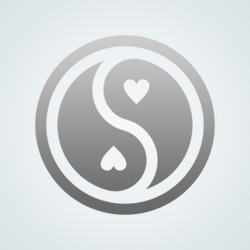A chain is a linear or one-directional succession of dependent links,
for instance:
algae, krill, fish, albatross/other/human
or grass, rabbit, wolf/other/human.
A web is a planar or two-dimensional diagram of interdependent relationships, some of which may be circular, radial, or may change directions.
An example of a circular relationship would be the biology of a veggie garden. Mulch, compost, and the manure of worms insects, and other animals are broken down into nutrients in the soil. These are absorbed through the roots of plants and converted into edible roots, leaves, flowers and fruit. Insects prey on the plants. Predator insects and birds feed on them, leaving behind their rich manure. Bees the flowers and make honey. Humans eat the vegetables and throw the scraps into the compost or to the chickens. Chicken manure is added to the veggie patch. Some veggies might also be fed to rabbits which the humans might eat.
In a rainforest or any natural ecosystem, the web of interrelationships is far more complicated.
Some species, like ants, have symbiotic relationships with fungi. Lichen is a symbiosis of algae and fungi.
Plants depend on animals to spread their seeds. Animals depend on plants for food and often for shelter.
All depends on all. Take one part out and the remainder begins to sicken.
Some parts are so crucial that if taken out the entire system will fail. The algae in our oceans is one of these.
We've spoken of chains and webs - but these are over simplifications.
In reality, ecosystems are three-dimensional and time-based (four-dimensional).
For instance, the sea life along a continental coast has three interdependent directions:
1. parallel to the coast line in both directions,
2. from ocean surface to ocean floor, moving up and down,
3. from deep ocean to beaches, rocks, mangroves, estuaries and rivers and back out again.
Each species migrates in a specific way throughout its life cycle and is dependent on the health and resources of each area for its survival. For a sea turtle, the life cycle can be three hundred years.


